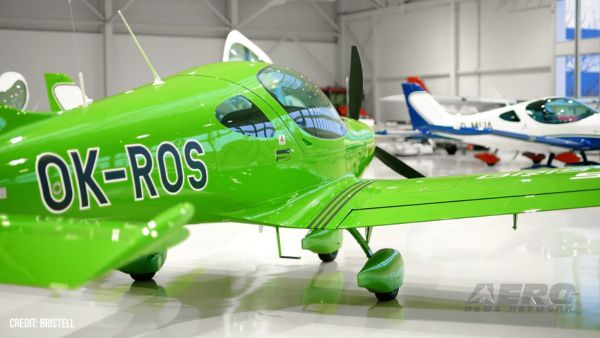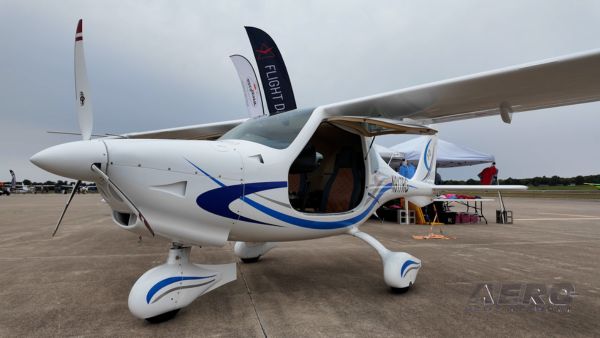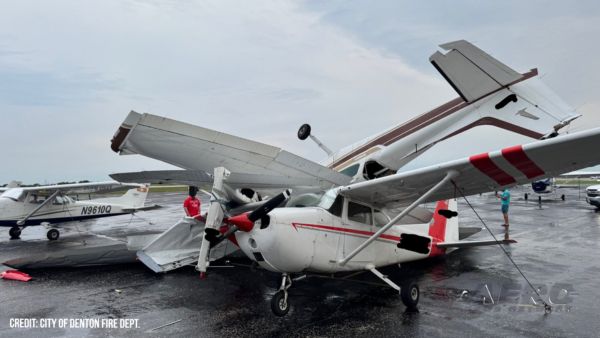Thu, Sep 11, 2003
Aurora Demonstrates Potential for a New Breed of Unmanned
Aircraft
 Aurora Flight Sciences Corporation
has announced the successful first flight of its unique
GoldenEye-100 unmanned aerial vehicle (UAV). During the early
morning hours on Monday, the barrel-shaped autonomous vehicle
executed a smooth vertical take-off and transition to a stable
hover well above the ground-hugging mist at the Manassas Regional
Airport in Virginia. "This demonstration completes a key milestone
in our development program," according to Carl Schaefer,
GoldenEye-100 Program Manager. "It confirms the robustness of
flight control systems and other key technologies in this unique
autonomous system."
Aurora Flight Sciences Corporation
has announced the successful first flight of its unique
GoldenEye-100 unmanned aerial vehicle (UAV). During the early
morning hours on Monday, the barrel-shaped autonomous vehicle
executed a smooth vertical take-off and transition to a stable
hover well above the ground-hugging mist at the Manassas Regional
Airport in Virginia. "This demonstration completes a key milestone
in our development program," according to Carl Schaefer,
GoldenEye-100 Program Manager. "It confirms the robustness of
flight control systems and other key technologies in this unique
autonomous system."
GoldenEye features unconventional performance that enables it to
take-off and land vertically, like a helicopter, then level off
into horizontal flight by virtue of rotating wings. This provides
users with access to a bird's-eye- view of hard to reach areas. Its
engine, known as a ducted-fan, is a propeller shrouded within a
cylindrical body -- a design that integrates advanced lightweight
structures and innovative flight controls to achieve the remarkable
performance. A key subsystem that contributed to flight success is
the GuideStar(TM) flight control system developed by Aurora's
sister company, Athena Technologies.
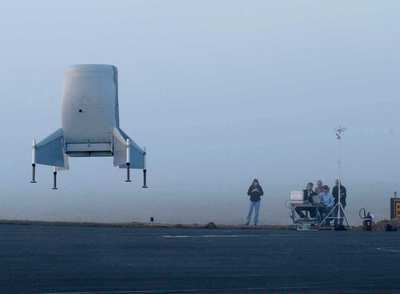
The GoldenEye-100 has been tailored as an affordable military or
civilian UAV for low-altitude reconnaissance, surveillance or
target acquisition missions. GoldenEye-100 stands 5.5 feet tall
with a gross takeoff weight of 150 pounds. The aircraft can cruise
up to four hours with a range of more than 500 miles at a maximum
speed of 160 knots.
In addition to the 150-pound vehicle, Aurora is developing a
smaller, 16- pound derivative called GoldenEye-50. Aurora plans to
build multiple GoldenEye-50s for homeland security applications and
expansion of the rapid flight envelope of the ducted-fan vehicle
class. This includes transition from hover to horizontal flight and
high-speed dash performance.
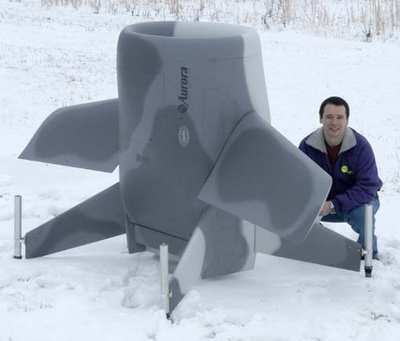
"This was an outstanding execution of first flight for this
unique surveillance tool," said Aurora president John Langford, "a
tool we see as playing a key role in the company's future." Aurora
was founded in 1989 to develop affordable robotic aircraft for
global climate change research. Aurora Flight Sciences is a leading
supplier of unmanned air vehicle designs, components, and flight
services for government, industry, and academic clients. Aurora
operates facilities in Virginia, West Virginia, and California. The
company specializes in the design and production of high-altitude
UAVs, and is a major supplier of composite structures for Global
Hawk and other aircraft.
More News
"This first FAA certification enables us to address the pilot shortage crisis with modern training solutions. Flight schools need alternatives to aging fleets with 40-year-old desi>[...]
Manufacturer Works to Set Up Shop in California Personal aviation company Jetson recently completed the first-ever delivery of its ONE electric vertical takeoff and landing (eVTOL)>[...]
Workforce Development Partnership Expands To Meet Demand Hawaiian Airlines and Honolulu Community College announced an expansion of their workforce development program with their l>[...]
Manufacturer Wiggles Its Way Into the US Flight Training Market Czech plane maker Bristell was awarded its first FAA Type Certification for the B23 two-seater, assisting its effort>[...]
Transforms Lunar Or Martian Regolith Into Materials For Self-Sustainment Blue Origin announced that its Blue Alchemist resource utilization system successfully completed its Critic>[...]
 Aero-News: Quote of the Day (09.12.25)
Aero-News: Quote of the Day (09.12.25) First-ever Jetson ONE eVTOL Delivery Goes to Oculus Founder
First-ever Jetson ONE eVTOL Delivery Goes to Oculus Founder Hawaiian Airlines, Honolulu CC Start Mx Tech Program
Hawaiian Airlines, Honolulu CC Start Mx Tech Program Bristell Receives First FAA Part 23 Certification for its B23 Trainer
Bristell Receives First FAA Part 23 Certification for its B23 Trainer Blue Alchemist Successfully Completes Critical Design Review
Blue Alchemist Successfully Completes Critical Design Review



